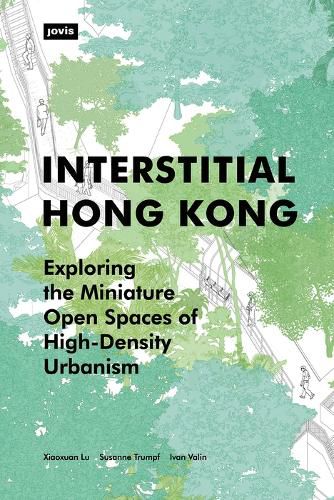Readings Newsletter
Become a Readings Member to make your shopping experience even easier.
Sign in or sign up for free!
You’re not far away from qualifying for FREE standard shipping within Australia
You’ve qualified for FREE standard shipping within Australia
The cart is loading…






Enmeshed in Hong Kong’s densely woven urban fabric, wedged between its towering mixed-use complexes and perched along its steep hillsides, sits a network of more than 500 miniature public parks comprising the smallest unit of the city’s public open space network. Though plentiful, these so-called Sitting-out Areas - referred to locally as
(literally: a three-cornered shit pit ) - have never been considered in terms of the collective resource they have the potential to be. This book presents a series of critical essays revealing the city’s Sitting-out Areas in relation to Hong Kong’s planning histories and shifting terrains, while also tracking how these spatial fragments have been shaped by concepts of publicness, accessibility and regulation. The second half of the book presents 44 richly illustrated case studies revealing the variety and idiosyncrasies of Hong Kong’s smallest open spaces. Ultimately, the book argues that we can understand the high-density city not only through its buildings, but through the character and potency of its interstitial landscapes.
$9.00 standard shipping within Australia
FREE standard shipping within Australia for orders over $100.00
Express & International shipping calculated at checkout
Enmeshed in Hong Kong’s densely woven urban fabric, wedged between its towering mixed-use complexes and perched along its steep hillsides, sits a network of more than 500 miniature public parks comprising the smallest unit of the city’s public open space network. Though plentiful, these so-called Sitting-out Areas - referred to locally as
(literally: a three-cornered shit pit ) - have never been considered in terms of the collective resource they have the potential to be. This book presents a series of critical essays revealing the city’s Sitting-out Areas in relation to Hong Kong’s planning histories and shifting terrains, while also tracking how these spatial fragments have been shaped by concepts of publicness, accessibility and regulation. The second half of the book presents 44 richly illustrated case studies revealing the variety and idiosyncrasies of Hong Kong’s smallest open spaces. Ultimately, the book argues that we can understand the high-density city not only through its buildings, but through the character and potency of its interstitial landscapes.